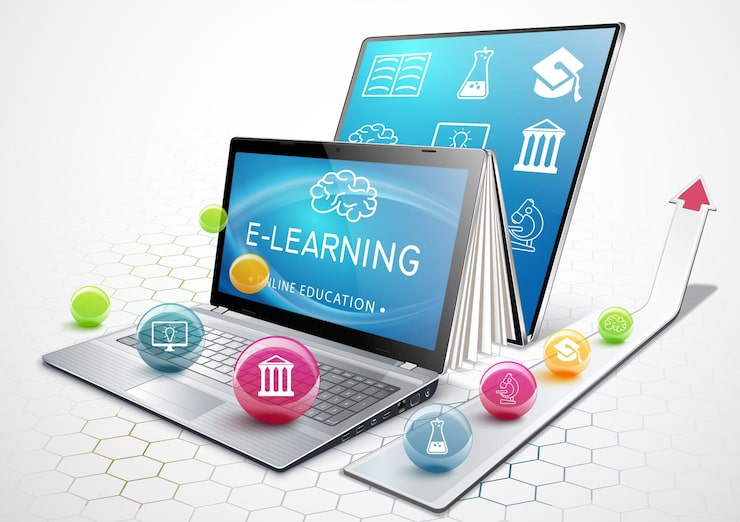Tech Education Platforms are redefining how students learn, teachers teach, and institutions deliver education. From interactive video lessons to AI-driven assessments, these platforms are bridging the gap between traditional classrooms and the digital era. As learning becomes increasingly global and technology-driven, students can now access resources that were once limited by geography or funding, making education more inclusive than ever before.
Empowering Students Through Interactive Learning
One of the remarkable benefits of Tech Education Platforms is their ability to engage students with interactive tools. Platforms like Coursera, Khan Academy, and Udemy offer gamified lessons, quizzes, and virtual labs that keep learners motivated. Students studying science can simulate experiments in virtual labs, while aspiring writers receive instant feedback on their compositions. This type of engagement turns passive learning into an active experience, making education both fun and effective.
Bridging Geographical Gaps
Education is no longer confined to a single classroom. Tech Education Platforms allow students from different countries to attend the same class, collaborate on projects, and participate in discussion forums. For instance, a high school student in India can join a coding workshop hosted in Silicon Valley, gaining exposure to cutting-edge techniques. This global connectivity not only enhances skills but also fosters cross-cultural understanding and collaboration.
AI-Powered Personalization
Modern platforms utilize artificial intelligence to tailor learning experiences to individual needs. Adaptive assessments track a student’s progress and suggest lessons that address weaknesses. For example, a student struggling with algebra can receive additional practice problems and tutorial videos, while advanced learners are challenged with more complex tasks. These Tech Education Platforms ensure that learning is not one-size-fits-all, promoting a more personalized and efficient educational journey.
Enhancing Teacher Capabilities
Teachers also benefit from these platforms. With real-time analytics, instructors can monitor student performance, identify knowledge gaps, and adjust lesson plans accordingly. Digital whiteboards, collaborative documents, and multimedia tools make lessons more dynamic, allowing educators to focus on interaction rather than rote instruction. This blend of technology and teaching improves both engagement and learning outcomes.
Integrating Tech With Traditional Curriculum
While digital platforms are transforming education, they complement rather than replace traditional classroom methods. Many schools integrate online modules with physical lessons, creating a hybrid learning environment. This approach enhances understanding by allowing students to review concepts at their own pace, practice skills digitally, and then apply them in hands-on classroom activities. Such synergy makes Tech Education Platforms an essential part of modern education strategies.
Accessibility and Inclusion
A key advantage of these platforms is accessibility. Students with disabilities benefit from features like screen readers, closed captions, and customizable interfaces. Additionally, learners in remote or underserved areas gain access to quality education that was previously out of reach. By reducing barriers, Tech Education Platforms contribute to a more equitable and inclusive learning ecosystem.
Inspiring Lifelong Learning
Beyond formal education, these platforms encourage lifelong learning. Professionals can upskill through online courses, hobbyists can explore new interests, and anyone with curiosity can access knowledge from top universities and industry experts. This culture of continuous learning ensures that education evolves alongside technology and industry demands.
Storytelling and Real-Life Application
Many platforms now integrate real-world case studies, simulations, and project-based learning. Students studying business may create virtual startups, while environmental science learners analyze climate data. These experiences make lessons tangible, showing how knowledge can be applied in professional or everyday scenarios. This blend of theory and practice is a hallmark of the most effective Tech Education Platforms.
Global Networking Opportunities
Finally, these platforms often include social features such as discussion forums, mentorship programs, and group projects. Students connect with peers worldwide, share insights, and build professional networks early in their careers. This global interaction prepares learners not just academically, but also socially and professionally, equipping them with skills for a connected, digital world.
Tech Education Platforms are transforming education from a localized, one-size-fits-all system into a dynamic, personalized, and globally accessible experience. Through interactive learning, AI-driven personalization, and integration with real-world applications, these platforms empower students and teachers alike, setting the stage for the next era of digital classrooms.
Read also:
the rameshwaram cafe – jp nagar menu
french food
mod pizza allergen menu
hotel taj menu card
mehidy hasan miraz height
shaik rasheed के खेल–कूद से जुड़े आंकड़े
